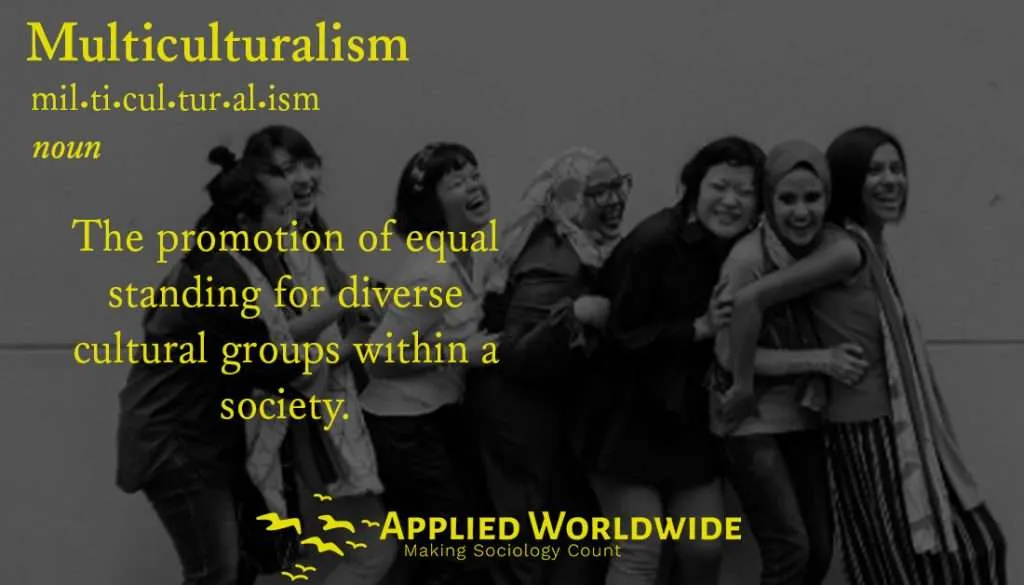Editorial Note:
This article about the sociology of religion of Indonesia is being published on behalf of Applied Worldwide’s 2021 student essay competition. Students were prompted to respond to the question, “Why is sociology important?” We have awarded 17 finalists from all over the world, and will publish these essays over the next several weeks.
This essay was written by Yohanes Yedid’diah Wijaya, a student at Gadjah Mada University in Indonesia. This essay received a second place award. We had a really great turnout and would like to thank everyone who submitted an essay. We received a wide variety of creative interpretations and responses, so browse our essay directory!
Yohanes Yedid’diah Wijaya – Sociology of Religion in Indonesia
I just finished an online class about multiculturalism one day in February 2021. The subject mainly talks about multiculturalism in the context of the country where I lived, Indonesia. I was given an essay assignment afterward. In the assignment, the lecturer was asking ideas as “future” sociologists on how to apply multicultural-based education in the Indonesian context to solve a certain case.

Since Indonesia has multicultural roots (race, ethnicity, religion, culture, etc.) that often taken for granted, maybe it’s quite easy to find such an interesting topic to start the essay and finish it quickly. What first came to my mind is the issue of tolerance. Throughout history, Indonesia had experienced a lot of conflicts, be it ethnic, religious, or cultural as a result of intolerance between different groups. This is deeply rooted in its multicultural nature.
The Case of Indonesia
There are lots of cases, such as terrorism, conflicts between ethnicities, or social exclusion of minority groups that are frequently and commonly talked about. Among those, what raised my curiosity was how people with local faith or religions live and take part in society. I quickly browse through the internet then since I haven’t met even one of them in real life. What I found is that they are often marginalized by the state and society.
In Indonesia, their beliefs are not officially recognized for there are only six existing official religions acknowledged by the state (Islam, Protestant, Catholic, Hinduism, Buddhism, and Confucianism). Only by 2017, they have the right to register their religion as “penghayat” (believers) on their identity card.
Sociology of Religion and Indigenous Groups of Indonesia
The indigenous religions had existed hundreds of years before. Sociologist Robert Bellah categorized religion into primitive, archaic, historic, early modern, and modern based on their historical evolution (Haris, 2013). These local religions may belong to the primitive or archaic category.
The primitive (what we might call animism or dynamism) believes in spirits, united with nature, and have a simple life with no strict stratifications whilst the archaic features more organized religion with its leader and rituals mostly related to the success of cultivation.
Six Religions of Contemporary Indonesia
The Indonesian six officially recognized religions had a long exist history. It was first marked initially by the arrival of Hinduism and followed not long by Buddhism. Both of these religions become dominant in ancient Indonesia by building empires linked to the religion. Later it was followed by Islam which gained local adherents. Through the emergence of Islam Sultanates, the religion from then become the majority until now.
Christianity arrived later and was commonly linked to colonialism. Though maybe the spread of Confucianism had existed long ago, in Indonesia it was never been a majority or dominant and has little proportion of adherents. Despite losing its popularity to major religions, the local religions still exist in modern times.
One of the issues they are facing now is their questionable existence in public schools. Religious education is typically taught in Indonesian schools. In public schools, the religious subject is only being provided to the six official religions. However, what often happened is that the religious subject is only being provided to the majority (in many cases the public school only provides the religion subject based on one religion). It’s not rare that students which don’t adhere to the religion of the majority were obliged to attend the majority’s religion class. They often get discriminated against.
Sociology of Religion: Religious Minorities in Indonesia
The case may be worse for the native religions. Their adherents are the minority, often overlooked, and the teachings of their religions often misunderstood. Another problem is the government couldn’t provide teachers for them (because it’s limited) for their religious education, so as I mentioned they would be rejected and forced to attend the majority’s class in school. Some of the extreme cases are students couldn’t answer the religion subject exam or even couldn’t be promoted to the next grade as a result. Teachers of native religious education also didn’t get paid, which poses another problem.
Sociology of Religion: Stigmatization and Religion in Indonesia
Outside of education, the problem of stigmatization or discrimination persists. For instance, some of them may have difficulties for administrative purposes such as marriage, finding jobs, and creating a birth certificate. Another example is persecution. In West Java Province, a local religious group called “Sunda Wiwitan” experienced threats from local mass organizations and being labeled “heretic”. Not only by the society, but the local government also prohibits them to build a tomb monument.
Three Sociological Solutions
As a sociology student, I have learned a lot about society and its problems. I could easily remember what one of my lecturers said: “Do not take things for granted, we should investigate carefully. Remember that common sense isn’t always right. At least, in the end, we don’t live as a puppet”.
Critical Thinking
His words encouraged me to examine every aspect of social life, including social issues. In short, it means applying critical thinking to social issues. In terms of the issue mentioned above, it means that I have to step out of my comfort zone (maybe social groups that I belong to) and go outside to see the complexities of the world.
Seeing the Bigger Picture
Besides critical thinking, the thing that’s not less important is seeing the bigger picture. It’s related to critical thinking itself. I explained the history of native religions above. The purpose is to see the bigger picture of what happened now. How those local faith adherents got marginalized based on its history. In my opinion, this way of thinking is linked with sociological imagination, a concept introduced by C. Wright Mills (Mills, 1959).
The idea is that personal troubles couldn’t be separated from public issues. Or, there is a link between biography and history. In reading the issue’s context, what happens now for some people and local groups (the marginalization) can be traced back to its roots. It also means that if it happened in one place, maybe it had happened before or simultaneously in another place.
Of course, it happened in more than one parts of my country, but most importantly discrimination of local religious groups happened in other parts of the world (what I mean is by European colonization, the number of local tribes is diminishing and it also affects the existence of its religious beliefs).
Social Advocacy
The third idea I want to offer is the advocacy of possible solutions. To complete the assignment given by my lecturer, I conclude that the possible solution is to advocate for government to include tolerance education in the curriculum. What I advocate about tolerance is not only the idea of identity recognition between different groups but deeper than that: the ability of students to give space and respect beliefs and identity that contradicts their own. If everyone can make this into reality, I’m quite sure in the long run the problem of marginalization and discrimination would disappear by itself.
To sum it up, the three main points I offer in the last part of this essay (critical thinking, see the bigger picture, and advocacy) are my answers to the problem I brought earlier. Those are what I’ve learned from sociology. First, we should have a sensitivity that there might be a serious problem lying behind. In short, critical thinking. Second, we could use sociological imagination to see the bigger picture. From those two processes, we have new insights and could use them as a tool for advocacy. That’s why learning sociology is important.
References
Haris, A. M. (2013). INDONESIAN RELIGIOUS EVOLUTION: Applying Bellah’s Theory in Indonesian Context. Jurnal Sosiologi Islam, 3(2), 27.
Mills, C. W. (1959). The Sociological Imagination. In The Sociological Imagination. https://doi.org/10.4324/9781912282685








